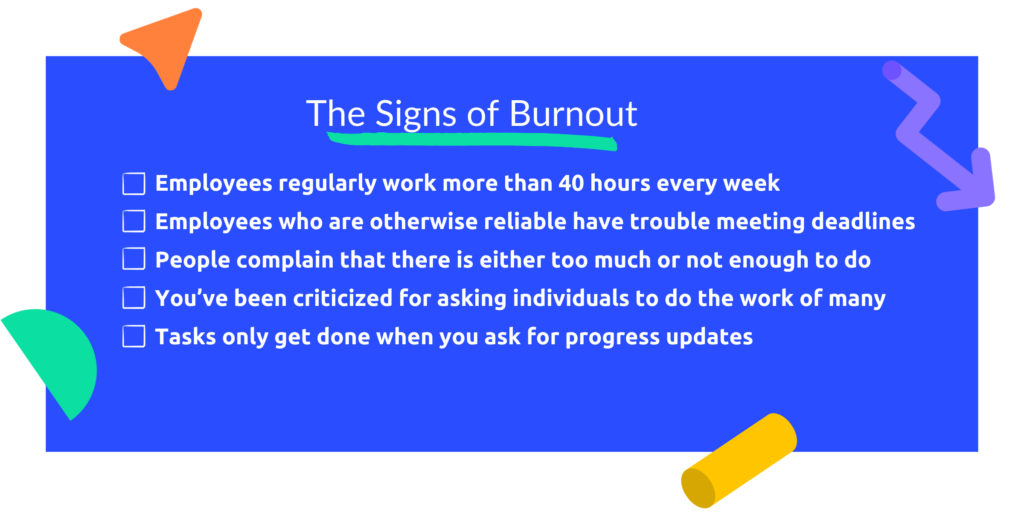If you and your team work from home, you may feel overwhelmed by your additional responsibilities to stay connected. With so much to do and so little time, it can be hard to plan out an effective workweek — but fear not! Creating a weekly work plan doesn’t have to add additional stress.
In this blog post, we’ll showcase some tips for making a comprehensive plan each week that will keep you organized, on-task, and motivated. But first, let’s delve deeper into weekly work plans.
Boost your team’s efficiency with Hubstaff's productivity tools
What is a weekly work plan?
A weekly work plan is a structured schedule outlining the tasks and activities that you intend to accomplish within a given week. It’s a practical tool designed to increase productivity and efficiency by providing a clear roadmap of what must be done daily.
Weekly work plans typically serve a number of purposes like:
- Outlining tasks
- Grouping related work together
- Establishing time estimates for each task
- Setting clear deadlines
This level of organization allows you to focus on one task at a time. Essentially, it’s about setting clear, manageable goals for the week and providing a path towards achieving them.
Benefits of using a weekly work plan
A well-structured weekly work plan offers numerous advantages like:
- Increased productivity. By setting a clear direction for each workday, you can eliminate the time wasted on deciding what task to tackle next.
- More effective time management. Allocating specific time blocks for each task helps to prevent procrastination.
- Reduced stress. Your team’s mental health will benefit, too. Instead of being overwhelmed by an array of tasks, they’ll be able to untangle their workloads and find peace of mind.
- Improved focus and concentration. A weekly work plan discourages teams from multitasking because they’ll know exactly what they need to work on.
- Better work-life balance. With a plan in place, you’ll get work done more efficiently. That means you can factor in breaks, prevent burnout, and enhance your team’s overall employee experience.

How to create a weekly work plan
Creating a weekly work plan can be broken down into the following steps: What seven elements are generally included in a work plan?
- Define your goals: Start by identifying what you want to accomplish by the end of the week. These goals should be SMART – Specific, Measurable, Achievable, Relevant, and Time-bound.
- Break down goals into tasks: Once you’ve set your goals, break them down into manageable tasks. Each task should pinpoint a specific goal.
- Prioritize tasks: Not all tasks are created equal. Some are more urgent or important than others. Use a productivity method like Time Blocking to help you prioritize your tasks based on their urgency and importance.
- Allocate time for each task: Estimate how much time each task will take and allocate specific time slots for these tasks. Remember to create realistic schedules that account for work breaks.
- Input tasks into your weekly work schedule: Use a digital calendar or a physical planner to input your tasks. Be sure to include deadlines and set reminders for each task. You can also try a project management tool with built-in time tracking.
- Review and adjust: Review your plan at the end of each day and week. Did you accomplish all that you set out to? If not, adjust your plan for the following week to knock out any incomplete tasks.
Remember, the key to a successful weekly work plan is flexibility. Like a project manager would create a contingency fund, a good people manager should factor in extra time for emergency changes.
That said, don’t be too hard on yourself if you don’t accomplish everything. Instead, focus on progress — not perfection. With time and practice, you’ll get better at planning and executing your weekly work plan.
Prioritizing tasks effectively
Effective task prioritization is key to creating an efficient weekly work plan. Here are some steps to help you prioritize your tasks effectively:
- Identify urgent tasks: Start by picking out the urgent tasks that can’t wait and need immediate attention.
- Assess importance: Just because a task is urgent doesn’t mean it’s important. Important tasks are those that contribute significantly towards your goals. Prioritize tasks that are both important and urgent over those that are simply urgent.
- Use a prioritization framework: Time management systems like the Eisenhower Matrix can be very helpful.
- Delegate when possible: Good leadership is about finding opportunities where others can succeed. If an important task consumes too much of your time, consider assigning it to someone on your team.
- Consider time-sensitivity: Priority and importance aren’t the only barometers for task prioritization. Make sure to knock out time-sensitive tasks first.
- Avoid multitasking: Countless studies have shown that multitasking is ineffective, but we do it anyway. Focus on one task at a time for maximum efficiency.
Remember, like anything else, effective task prioritization takes practice. Over time, you’ll become more efficient and effective.

Tips for staying motivated and focused
Staying motivated and focused can be challenging, especially when juggling multiple tasks. Here are some strategies that can help:
- Set clear goals: The term “goal” is thrown around too loosely. Remember what you’ve learned about SMART goals (Specific, Measurable, Achievable, Relevant, Time-bound).
- Break tasks down: Some tasks truly are too big to take on — unless you break them down into smaller, more manageable to-dos. Do this whenever possible to reduce stress and create mentally healthy, efficient teams.
- Use positive reinforcement: When someone goes above and beyond on a difficult task, make sure to shout them out. At Hubstaff, we use our #hubstars channel on Slack. Shoutouts earn you a $20 bonus.
- Stay organized: Staying organized is common sense, but how often do you actually remember to do it? Take a deep breath and use your spare time to stay organized.
- Limit distractions: Technology is helpful but also distracting. Fortunately, most tools have settings that allow you to turn off notifications. You can also look into workforce management tools that identify time-wasting apps and URLs.
- Practice mindfulness: Taking care of your team’s mental health is crucial to success. Check-ins, one-on-ones, and team-building exercises go a long way.
- Take regular breaks: People aren’t machines. Non-stop work only leads to burnout. Allow short, regular breaks when you can. They actually improve productivity and focus.
- Stay healthy: Regular exercise, a healthy diet, and sufficient sleep are all crucial for maintaining energy levels and focus. That’s why a lot of companies offer incentives for employees that take good care of themselves.
- Maintain a positive attitude: At the end of the day, work is really agonizing at times. Your team will look to you to lead by example. Positive attitudes and affirmations can yield positive results.
Motivation waivers — but that doesn’t mean you can’t use these tips to do your best. Be patient with your team. Instead of micromanaging and doubling down on workloads, schedule a one-on-one when you see a team member struggling to stay motivated.
What’s your weekly plan?
With these tips in mind, you can create a weekly work plan that fits your team’s unique needs. Have any tips that we’re missing? What about a template you like to use? Share your ideas in the comments!
Most popular
The Fundamentals of Employee Goal Setting
Employee goal setting is crucial for reaching broader business goals, but a lot of us struggle to know where to start. American...
Data-Driven Productivity with Hubstaff Insights: Webinar Recap
In our recent webinar, the product team provided a deep overview of the Hubstaff Insights add-on, a powerful productivity measurem...
The Critical Role of Employee Monitoring and Workplace Security
Why do we need employee monitoring and workplace security? Companies had to adapt fast when the world shifted to remote work...
15 Ways to Use AI in the Workforce
Whether through AI-powered project management, strategic planning, or simply automating simple admin work, we’ve seen a dramatic...



![How to Use Time Blocking to Make 2024 Your Most Productive Year Ever [Free Template]](https://hubstaff.com/blog/wp-content/uploads/2018/12/time-blocking@2x-780x390.png)
